How to protect vegetables from frost – 6 recommended ways to safeguard crops
Find out how to protect vegetables from frosts that can harm, or even kill, them
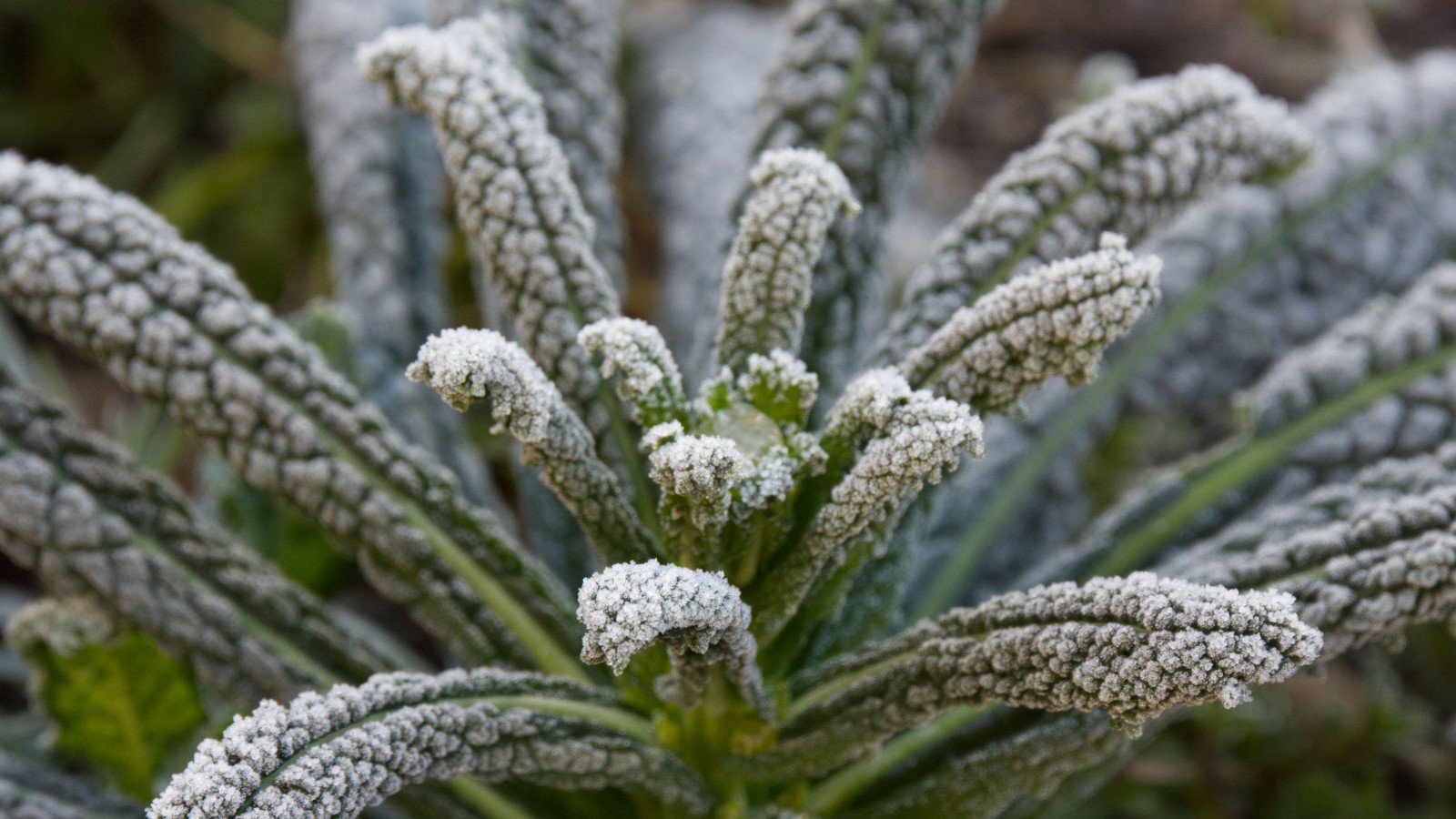

Cold nights and freezing temperatures have the potential to wreak havoc on vegetable crops, but rest assured there are many successful ways to protect vegetables from frosts.
Whether protecting them from the first freezing night in fall, or having to shield young seedlings from late spring frosts, there are products you can buy or homemade solutions to try that can stop your vegetables succumbing to frosts.
I worked in several vegetable gardens in the UK, from the south west of England up to the northern border with Scotland. The frost dates varied by several weeks, and I had to factor in plans to protect vegetables from frosts – especially late frosts in the spring. When it comes to how to protect plants from frost, there are many simple and quick ways to protect those more vulnerable vegetable plants in your garden.
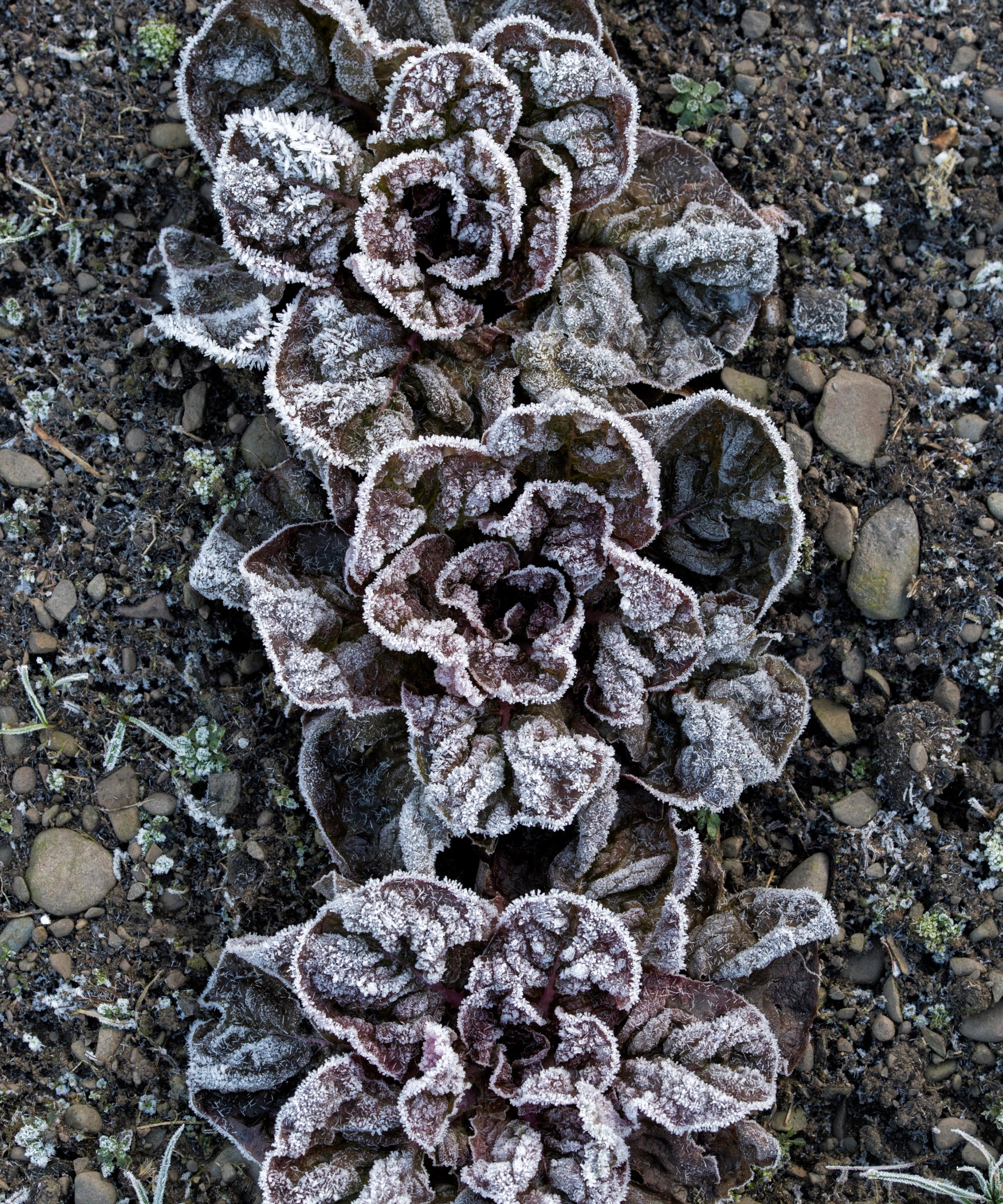
Lettuce can survive a light freeze
6 ways to protect vegetables from frost
The dates for the first and last frosts in your area will vary by the US hardiness zone in which you are located. Whether a crop needs protection from frosts will depend on each individual plant, as some vegetables are hardier than others, and also where they are planted.
A light frost of around 28˚F to 32˚F is likely to trouble but not cause too much harm to most vegetables, while a hard frost of lower than 28˚F can spell problems. However, if the frost arrives late in the spring, when you have recently transplanted young seedlings, then any drops in temperature can be catastrophic.
There are some vegetables that benefit from frosts, for example when growing parsnips the frost actually turns starches in the roots into sugars and makes the parsnips taste sweeter. The likes of celeriac, leeks, brussels sprouts, and kale can also taste better after a frost.
If you are looking to protect vegetables from frost, there are several options out there to choose from.
1. Fleece
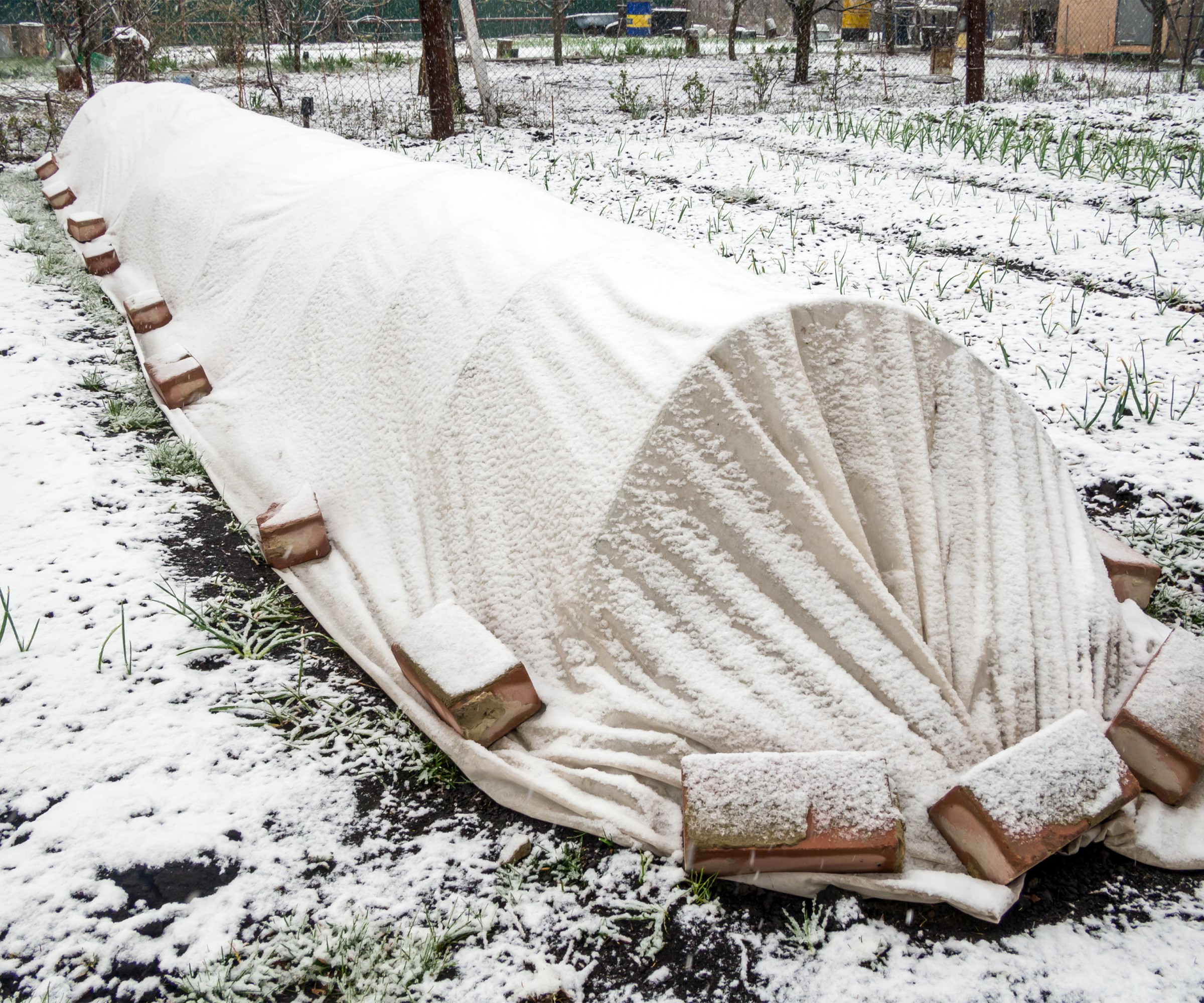
Row covers keep plants insulated underneath
To protect groups of crops in a vegetable garden from frost you can cover them with a layer of material to insulate them. There are various materials and products available to choose from for this purpose.
This includes horticultural fleece, a light and fibrous material that is commonly available, and also row covers, which can be made of fabric or polyethylene plastic and last for many years. Both materials come in rolls that can be simply rolled out over plants and can raise the temperature underneath by a few degrees to keep plants protected from frost. One example of row covers is these 10x30 ft winter plant protection covers available on Amazon.
Fleece can keep plants up to five degrees warmer than the outside air temperature, while plastic materials can be up to ten degrees warmer. The covers both let water and light reach the vegetables underneath, while keeping the soil warm and the cold off the plants.
2. Old bed sheets
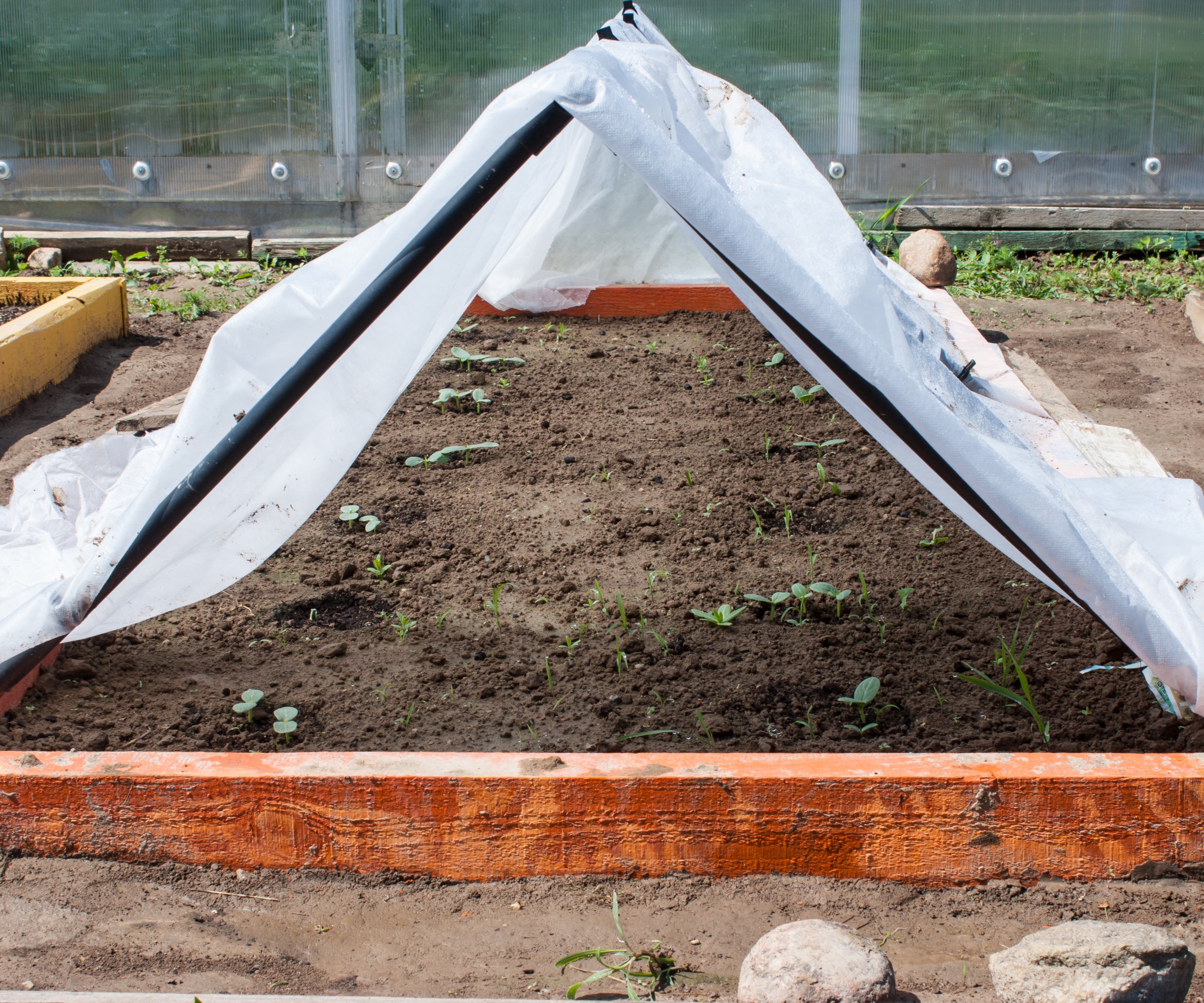
Protective sheets can be raised up to protect seedlings
If you do not wish to purchase dedicated covers, or there is a late frost and you need to come up with a homemade solution, then you can use old blankets or sheets as makeshift covers. These options are more short-term solutions, as they will not let light through to the plants like fleece or translucent plastic.
Covers of heavier materials will need to be held above the vegetables by hoops put in place to prevent them squashing plants underneath – especially if they are protecting seedlings.
3. Cloches
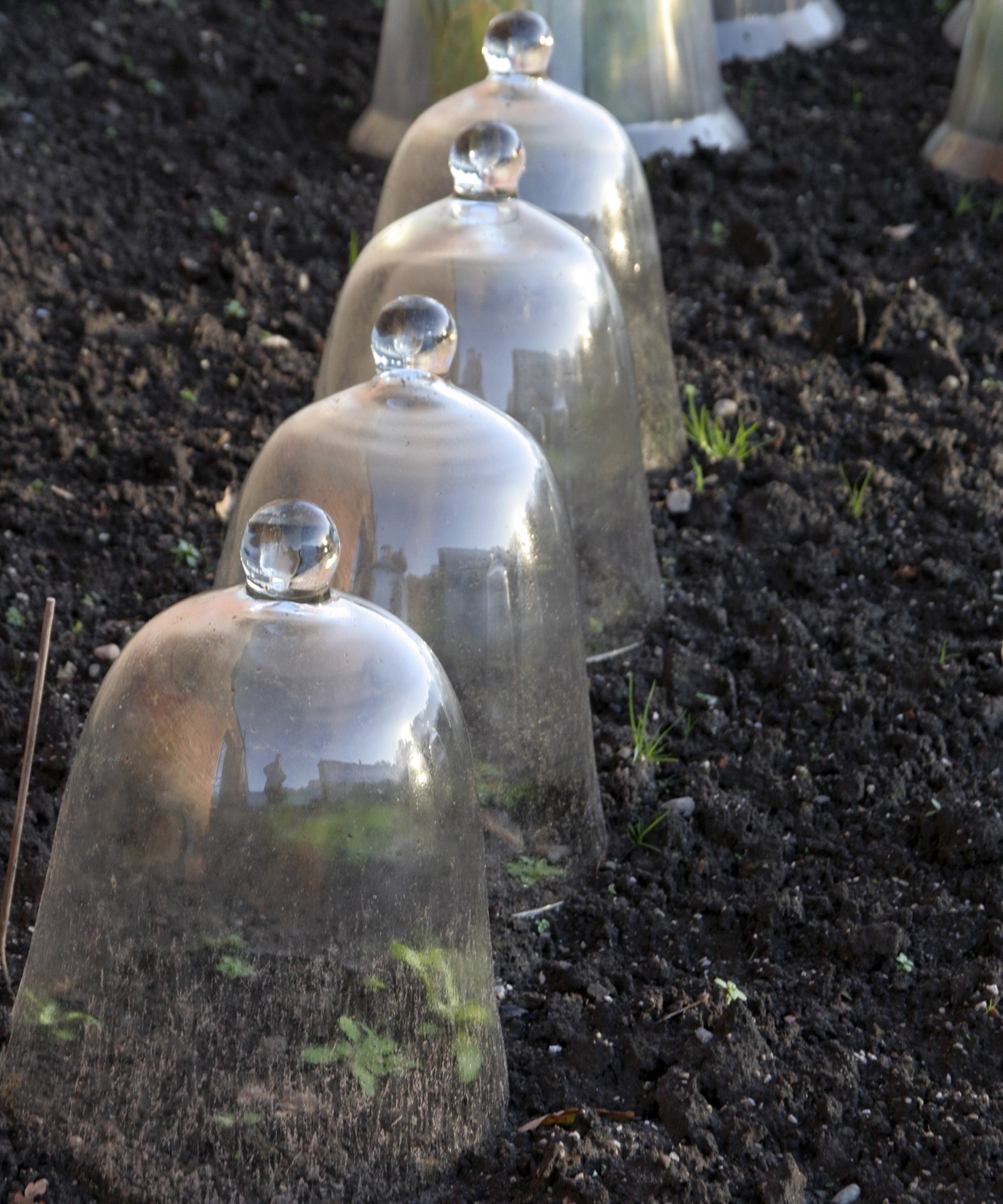
Cloches create a warm and protected environment around plants
If you are looking for how to protect young vegetables from frosts, then one of the best methods is a cloche. They are bell-shaped covers that can protect seedlings and smaller plants by being placed over individual plants or small groups.
A cloche creates a protected and insulated environment around the plants, keeping heat from the soil around them and stopping cold air from entering. Often made from glass or plastic, they should be put in place for the night and then removed in the morning.
You can purchase garden cloches, or make your own homemade versions. The likes of plastic bottles or milk containers can do the job of a cloche to protect young vegetable crops in a small vegetable garden. An example of simple and reusable cloches is these Reusable Plant Protector Covers available on Amazon.
4. Move pots
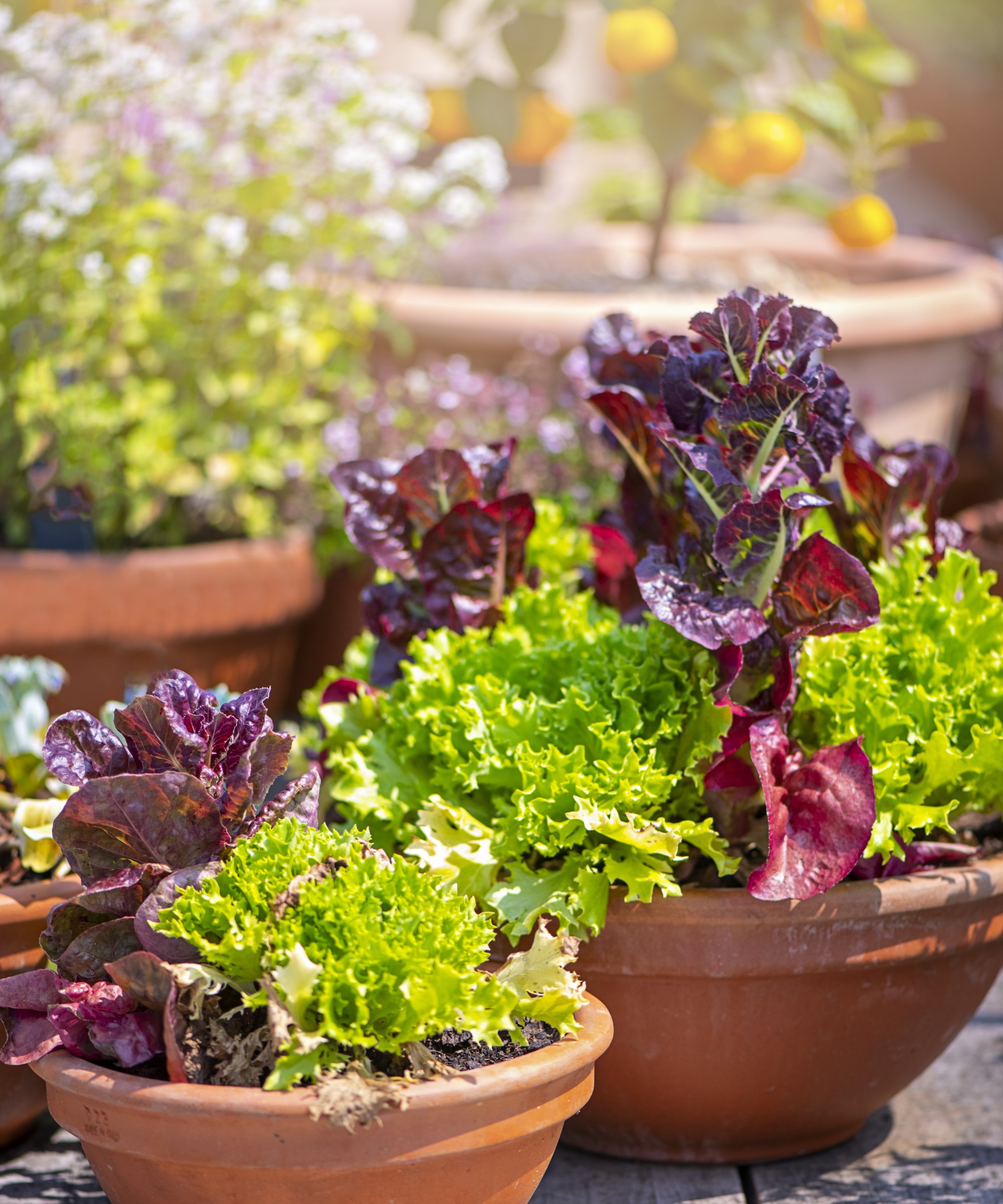
Vegetables in pots can be moved to a protected environment
If you are growing vegetables in containers, then move them indoors or to a protected area for winter. Plants in pots are more susceptible to frosts, as their roots are not as protected as with plants in the ground.
You can cover individual pots with fleece or bubble wrap to protect the roots, or simply move the pots undercover if there is a frost predicted for the night-time. If you do move the pots, don’t make the mistake of moving them somewhere very warm, such as a heated greenhouse. It is better to choose a shed or garage, as a sudden temperature change can shock the plant.
5. Mulch

Mulch protects plants from fluctuating temperatures
A thick layer of mulch can protect vegetables from frosts, with the mulching material keeping plants insulated and warm. A winter mulch in a vegetable garden provides a steady soil temperature, rather than the fluctuations of a constant freezing and thawing process that can cause them to be lifted out of the soil, exposing roots to frost damage.
The best material for protecting vegetables in the ground over winter is straw, as it is lightweight and is also easy to harvest through. For example, it can keep the soil warm and unfrozen to make it easier to lift parsnips or carrots from the ground.
For perennial crops, such as asparagus or rhubarb, you can apply a good thick layer, around three inches, of the likes of compost, leaf mold, bark chips, or shredded bark.
6. Water
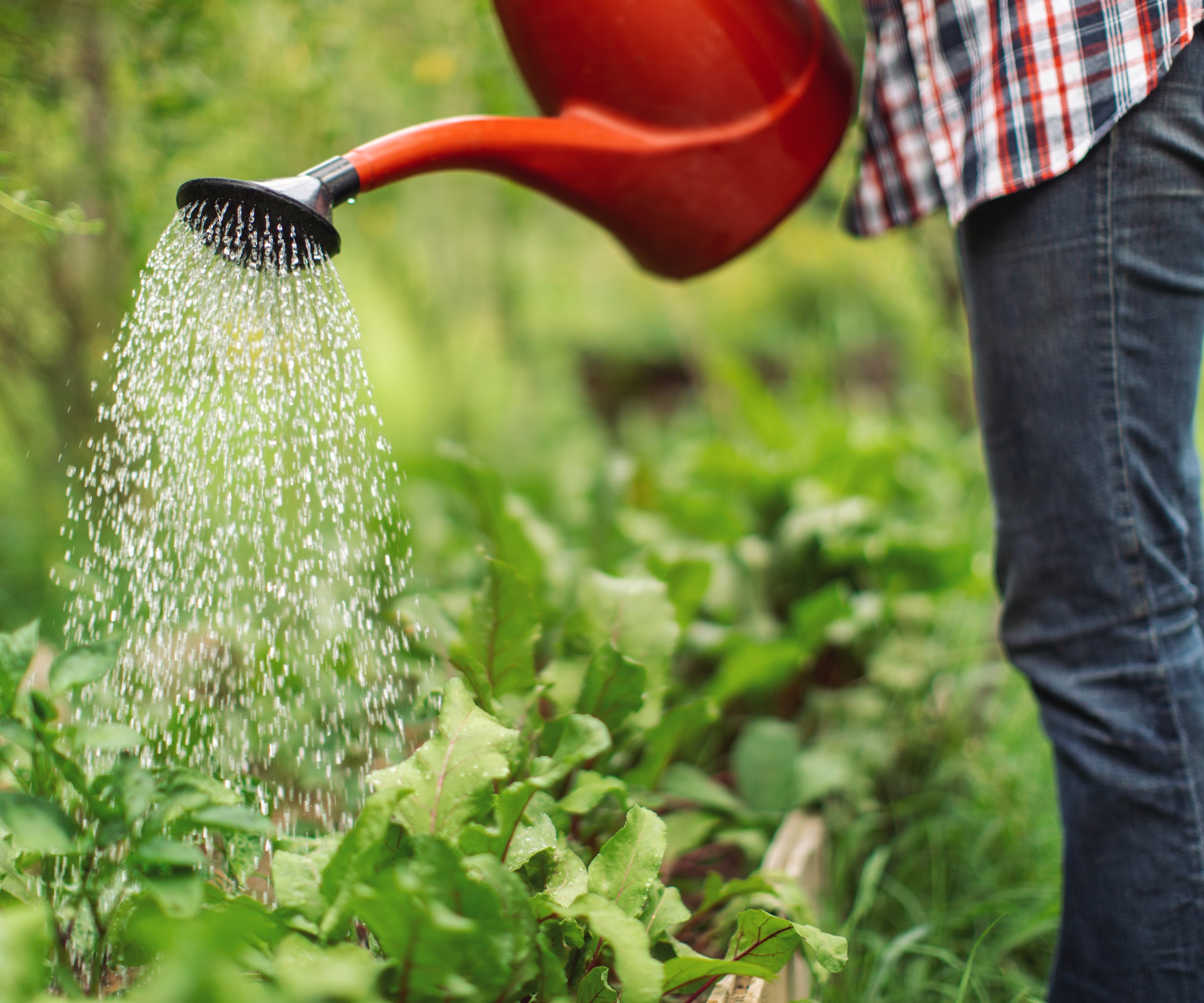
Water the soil before covering plants to protect from frosts
It might be a surprise to hear, but watering plants can actually help to protect vegetables from frost. Moist soil can conduct heat, with wet soil holding much more heat that dry soil.
Watering in the morning before a predicted frost can see the soil absorb heat during the day and then radiate that heat at night to insulate the plants at ground level. For an extra level of security when protecting vegetables from frosts, water the ground before putting fleece or row covers over the plants.
FAQs
What vegetables will be killed by frost?
Not all vegetables will be killed by a frost, and it will depend on the severity of any frost. Many vegetables are hardy and can withstand a frost, however the likes of squash, pumpkins, beans, cucumber, eggplant, melons, peppers, and tomatoes will all be harmed by frosts, even light frosts. Some crops, such as when growing potatoes, can be set back by frosts but will continue to grow – they will be stunted but not killed if they get frosted.
What should I do if there is an unexpected late frost?
Even if you plan ahead and wait until after the usual last frost date to plant out crops, you can still be caught off-guard. If there is a late spring frost set to hit, there are measures that you can take to protect your vegetables.
It all depends what supplies you have. If you have fleece or a set of row covers, then get them over your vegetables. However, if not, you may have to be a bit more savvy and use what’s at your disposal. In this case, water the plants thoroughly and then cover them with whatever you can, it can be a lightweight blanket, homemade plastic cloches, or even a bucket or pot if you have nothing else.
A frost can truly be devastating for some vegetable crops, in particular vegetable seedlings, in a kitchen garden or vegetable garden. However, with some prior planning and a few supplies even a surprise late frost need not be a problem for your crops.
Always research the predicted frost dates for your area and understand your plants, this way you know what can withstand a light frost and what is a priority to protect from freezing nights.
Sign up to the Homes & Gardens newsletter
Design expertise in your inbox – from inspiring decorating ideas and beautiful celebrity homes to practical gardening advice and shopping round-ups.

Drew’s passion for gardening started with growing vegetables and salad in raised beds in a small urban terrace garden. He has worked as a professional gardener in historic gardens and specialises in growing vegetables, fruit, herbs, and cut flowers as a kitchen gardener. That passion for growing extends to being an allotmenteer, garden blogger, and producing how-to gardening guides for websites. Drew was shortlisted for the New Talent of the Year award at the 2023 Garden Media Guild Awards.
-
 Do cleaning products expire? Professional cleaners warn time could make them ‘less effective, and in some cases, irritating to use’
Do cleaning products expire? Professional cleaners warn time could make them ‘less effective, and in some cases, irritating to use’For the best results, it pays to stay on top of the timeline of your cleaning products
By Chiana Dickson Published
-
 7 of the best tomatoes for growing in pots - expert growers pick their top varieties ideal for large harvests from containers
7 of the best tomatoes for growing in pots - expert growers pick their top varieties ideal for large harvests from containersYou can enjoy bumper homegrown harvests in small spaces
By Drew Swainston Published